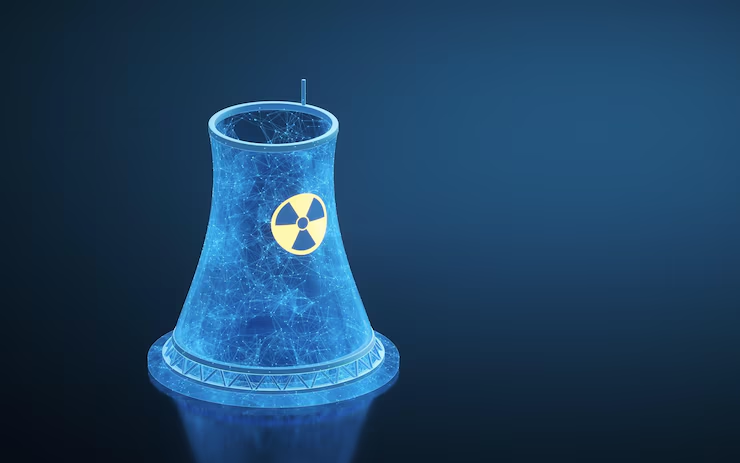Nuclear Power’s Shocking Secret: Is It Killing the Energy Industry?
Nuclear Power’s Shocking Secret: Is It Killing the Energy Industry?
Overview:
- The Current Landscape: Imagine a world grappling with climate change, energy security concerns, and ever-increasing energy demands. Nuclear power, long hailed as a low-carbon alternative, stands as a significant player in the global energy mix. However, beneath the surface of this seemingly stable picture lies a complex reality. Many nuclear plants are aging, requiring significant investment for maintenance and upgrades. Simultaneously, the cost of constructing new plants remains exceptionally high, hindering widespread adoption. This creates a paradoxical situation: a vital clean energy source potentially undermining the very industry it supports.
- The Central Question: This blog post tackles a crucial question: Is the inherent cost and complexity of nuclear power inadvertently stifling innovation and investment within the energy sector as a whole? Are the challenges facing the nuclear industry so profound that they’re diverting resources and attention away from other sustainable energy solutions, creating a self-defeating cycle?
- Our Approach: We’ll systematically explore this critical issue through a step-by-step analysis. First, we’ll delve into the financial realities of nuclear power generation, examining the lifecycle costs, from construction to decommissioning, and comparing them to other energy sources. (Include image here: A comparative chart of lifecycle costs for nuclear, solar, and wind power)
- Understanding the Constraints: Next, we’ll analyze the regulatory hurdles and technological limitations that contribute to the high costs and lengthy timelines associated with nuclear projects. This will involve a detailed examination of safety regulations, licensing processes, and the challenges of waste management. (Include image here: A flowchart illustrating the nuclear power plant approval process)
- Looking Ahead: Finally, we’ll explore potential solutions and innovations that could revitalize the nuclear energy sector and alleviate its financial burdens. This will include discussing advancements in reactor design, improved waste management strategies, and the potential for public-private partnerships to reduce risk and accelerate deployment.
This exploration will be of paramount importance to nuclear power professionals and business leaders, offering insights that are crucial for navigating the complex landscape of the energy industry and fostering a sustainable energy future. Let’s begin uncovering the secrets of nuclear power’s impact on the energy world.
Analyzing the Nuclear Power Plant Market: Trends and Actionable Insights
The nuclear power plant market is undergoing a significant transformation, shaped by a complex interplay of technological advancements, regulatory changes, and evolving public perception. Understanding these trends is crucial for strategic planning.

1. Positive Trends:
- Small Modular Reactors (SMRs): This is a major positive trend. SMRs are smaller, factory-built reactors offering improved safety, lower capital costs, and faster deployment compared to traditional large-scale plants. This makes them attractive for diverse applications, including remote locations and regions with limited grid infrastructure.
- Impact: Creates opportunities for new entrants and diversification for existing players. Companies can focus on SMR design, manufacturing, and deployment, opening new markets.
- Actionable Insight: Invest in R&D for SMR technologies, develop partnerships with specialized manufacturers, and explore niche markets for SMR deployment. NuScale Power is a leading example of a company successfully commercializing SMR technology.
- Advanced Reactor Designs: Beyond SMRs, innovations in reactor designs are enhancing safety and efficiency. Gen IV reactors, for example, promise improved fuel utilization and waste reduction.
- Impact: Drives technological advancement and enhances the competitiveness of nuclear power against other energy sources.
- Actionable Insight: Engage in collaborative R&D efforts, secure early patents on promising technologies, and actively participate in industry consortia to shape the future of reactor design.
- Growing Interest in Nuclear Energy for Decarbonization: The urgent need to reduce carbon emissions is fueling renewed interest in nuclear power as a reliable, low-carbon energy source.
- Impact: Increased government support, funding, and regulatory approvals for new nuclear projects.
- Actionable Insight: Actively lobby for supportive policies, engage with policymakers to highlight the role of nuclear power in decarbonization, and develop communication strategies to address public concerns about nuclear energy.
2. Adverse Trends:
- High Capital Costs and Long Construction Times: Traditional nuclear plants are notoriously expensive and time-consuming to build. This poses a significant barrier to entry and can lead to project delays and cost overruns.
- Impact: Limits the widespread adoption of nuclear power and creates financial risks for companies involved in large-scale projects.
- Actionable Insight: Explore innovative financing models, streamline regulatory processes, and leverage modular construction techniques to reduce costs and construction timelines.
- Nuclear Waste Management: The safe and permanent disposal of nuclear waste remains a significant challenge. Public perception and regulatory hurdles around waste management can hinder new project approvals.
- Impact: Creates regulatory and public acceptance challenges, potentially leading to project delays or cancellations.
- Actionable Insight: Invest in advanced waste management technologies, actively participate in public dialogues to address concerns, and collaborate with governments to develop comprehensive waste management strategies.
- Safety and Security Concerns: The history of nuclear accidents and ongoing security concerns can negatively affect public perception and investor confidence.
- Impact: Increased regulatory scrutiny, heightened security measures, and potential for public opposition to new projects.
- Actionable Insight: Prioritize safety and security measures, invest in advanced safety systems, actively engage with communities to build trust, and transparently communicate safety protocols.
By proactively addressing these trends, companies in the nuclear power plant market can navigate the challenges and capitalize on the opportunities to thrive in this evolving sector. A combination of technological innovation, strategic partnerships, and effective communication will be crucial for success.
1. Healthcare: Nuclear medicine uses radioactive isotopes produced in reactors for diagnosis and treatment. Technetium-99m, for example, is crucial for imaging scans like bone scans and heart scans, aiding in early disease detection and improved patient outcomes. Hospitals and imaging centers rely on a consistent supply from nuclear power plants or specialized facilities co-located near them. This supply chain needs robust management and reliable transportation to ensure timely patient care.
- Manufacturing: Industrial sterilization using gamma irradiation from nuclear sources sterilizes medical equipment, food products, and other materials, ensuring safety and extending shelf life. Companies involved in this process need to manage contracts with nuclear facilities, comply with strict safety regulations, and ensure consistent radiation dosage to guarantee product quality and regulatory compliance. Strategic partnerships with nuclear power plants are crucial for secure access to irradiation services.
- Technology: Nuclear power plants generate electricity that supports data centers and technology infrastructure. Companies like Google and Amazon utilize large-scale data centers that need reliable and considerable energy supply. Securing power purchase agreements (PPAs) with nuclear plants offers a stable, low-carbon energy source for their operations, improving their ESG (environmental, social, and governance) profile and reducing their carbon footprint. A stable energy supply is critical for business continuity.
- Automotives: Nuclear power indirectly supports the automotive industry through electricity generation. Electric vehicle (EV) battery production requires significant electricity, and nuclear power provides a clean and reliable source. Automakers can benefit by partnering with energy providers using nuclear power to source clean electricity for their manufacturing plants and reduce their carbon emissions associated with EV production. This creates a positive brand image and meets growing consumer demand for sustainable products.
- Research and Development: Universities and research institutions use isotopes produced in reactors for various scientific research purposes. This includes research in materials science, medicine, and environmental studies. Companies in these fields often collaborate with universities and research institutes and can benefit from access to research findings and specialized expertise coming from reactor-based research. Strategic funding of relevant research can lead to innovation and technological breakthroughs.
- Water Desalination: Nuclear power plants can provide the large amounts of energy needed for desalination plants to produce potable water in water-scarce regions. Companies involved in water management and distribution in such regions can explore partnerships with nuclear plants to ensure a reliable water supply, creating new revenue streams and addressing critical societal needs. This can also be an opportunity to develop innovative water management technologies.
1. Strategic Partnerships for Advanced Reactor Technologies (Inorganic): Companies like GE Hitachi Nuclear Energy and Westinghouse are actively forging alliances with smaller, innovative companies specializing in advanced reactor designs like Small Modular Reactors (SMRs). This allows them to leverage specialized expertise and accelerate development and deployment without needing to develop everything in-house. For example, a partnership might focus on integrating a specific company’s advanced fuel technology into a larger company’s SMR design.
- Focus on Digitalization and AI for Enhanced Operations and Safety (Organic): Many players in the nuclear sector are heavily investing in digital twins and AI-powered predictive maintenance systems. This allows for optimized plant performance, early detection of potential problems, and reduced downtime. A specific example could be using AI to analyze sensor data in real-time, predicting equipment failures before they occur, and scheduling maintenance proactively. This improves operational efficiency and safety significantly.
- Supply Chain Diversification and Resilience (Organic): Following global supply chain disruptions, companies are prioritizing diversification of their supply chains for critical components. This involves exploring new sourcing options, building strategic inventories, and fostering stronger relationships with suppliers to ensure continuous operations. This could involve securing alternative sources for specialized nuclear materials or working with domestic suppliers to reduce reliance on foreign sources.
- Investing in Workforce Development and Training (Organic): Addressing the skills gap in the nuclear industry is paramount. Companies are expanding their apprenticeship programs, partnering with universities, and investing in advanced training simulators to ensure a skilled workforce for future projects. A practical example might be establishing a specialized training center equipped with advanced simulators to train operators on the latest reactor technologies and safety procedures.
- Aggressive Licensing and Regulatory Strategy (Organic/Inorganic): Companies are streamlining their licensing processes and building strong relationships with regulatory bodies to expedite the approval and deployment of new technologies. This can involve proactively addressing potential regulatory concerns early in the development phase and leveraging external expertise to navigate complex regulatory hurdles. This could encompass strategic lobbying and collaborative engagements with regulatory agencies to ensure efficient and compliant deployments.
- Expansion into Emerging Markets (Inorganic): Several firms are focusing on expanding their presence in countries actively developing their nuclear energy programs. This may involve joint ventures, technology transfers, and direct investments to capitalize on growth opportunities in these markets. An example might involve a partnership with a local company in a developing nation to build and operate a new nuclear power plant, transferring knowledge and expertise in the process.

Outlook & Summary: Nuclear Power’s Future – A Shifting Landscape
The nuclear power industry stands at a crossroads. This article explores the complex relationship between established nuclear power plants and the broader nuclear energy sector, examining how advancements are impacting the traditional model. Over the next 5-10 years, we can expect several key shifts:
- Increased Small Modular Reactor (SMR) Deployment: Expect to see a surge in SMR development and deployment. These smaller, safer, and more modular reactors offer a more flexible and potentially cost-effective alternative to large-scale plants, opening up new opportunities for geographically diverse locations and reducing upfront capital investment risks. (Image: A graphic comparing the size and scale of a traditional reactor vs. an SMR)
- Advanced Reactor Technologies: Next-generation reactors, including those utilizing advanced fuel cycles and passive safety features, will enter the commercial market. This will increase the safety profile and potentially reduce waste generation. (Video: A short animation showcasing the functionality of an advanced reactor)
- Regulatory Evolution: Regulatory frameworks will adapt to accommodate these new technologies, aiming to streamline the licensing and approval processes for SMRs and advanced reactors. This is crucial for accelerating their market penetration.
- Competition and Collaboration: The nuclear energy sector will experience intensified competition, not just from renewable energy sources, but also from within, as different reactor technologies vie for market share. Strategic partnerships and collaborations will be crucial for success.
Key Takeaway: The article reveals that while established nuclear power plants face challenges from aging infrastructure and economic pressures, the wider nuclear energy sector is undergoing a renaissance driven by innovation. The focus is shifting from large-scale, centralized plants towards smaller, safer, and more flexible solutions. This is not a simple story of decline, but a dynamic evolution. The future of nuclear power hinges on embracing this technological transformation and adapting to the evolving energy landscape.
The crucial question for industry professionals is: How can established nuclear power plant operators leverage these advancements to remain competitive and secure a place in the future energy mix?


